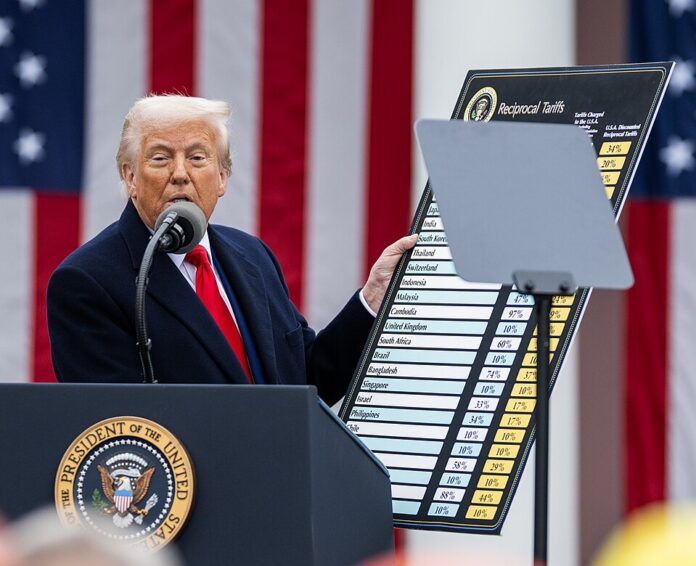Former U.S. President Donald Trump’s renewed call for “reciprocal” tariffs marks yet another blow to the already strained World Trade Organization (WTO) and the global trading system it was designed to uphold. While Trump’s protectionist stance has received wide criticism, experts argue that the WTO’s own structural and procedural limitations have left it vulnerable to such disruptions. As multilateralism falters, the future of global trade governance hangs in the balance.
Trump’s “Reciprocal” Tariff Strategy
Trump’s rhetoric on “fair” and “balanced” trade has consistently centered around the idea that tariffs imposed on U.S. goods should be matched by equal tariffs on foreign goods entering the U.S. This approach, termed “reciprocal tariffs,” effectively undermines the WTO’s central principle of non-discrimination — that all members should be treated equally under Most Favoured Nation (MFN) provisions.
The latest proposal reflects the Trump-era trade philosophy: bilateralism over multilateralism, economic nationalism over global cooperation. This approach had previously led to disruptive tariff battles with China, the EU, and even allies like Canada and Mexico.
The WTO’s Internal Struggles
While Trump’s aggressive trade measures exposed vulnerabilities, the crisis within the WTO predates his presidency. Several key problems have compounded over the past two decades:
1. Stalled Negotiations
The Doha Development Round, launched in 2001, aimed to address trade barriers and ensure fairer trade for developing countries. However, differences between developed and developing economies — especially over agriculture, subsidies, and intellectual property — have left negotiations deadlocked for years.
2. Dispute Settlement Paralysis
The WTO’s crown jewel, its Dispute Settlement Body (DSB), is currently dysfunctional. The Appellate Body, which serves as the final arbiter in trade disputes, has been crippled since 2019 after the U.S. blocked appointments of new judges. Without a quorum, the DSB cannot enforce rulings, leaving trade conflicts unresolved and eroding trust in the system.
3. Procedural Gridlock
The WTO’s consensus-based decision-making process makes it extremely difficult to enact meaningful reforms. Any single member can block progress, leading to inertia even in the face of pressing global trade challenges such as digital commerce, climate-linked trade policies, and supply chain resilience.
The Erosion of Multilateral Trade Norms
The WTO was established in 1995 with a mandate to promote free, fair, and rules-based trade. But the erosion of trust, divergent priorities between North and South, and geopolitical rivalries have steadily undermined this mission.
Trump’s unilateral tariff policies, while criticized, found fertile ground in a system that was already fractured. As countries increasingly resort to plurilateral or bilateral trade agreements, the relevance of the WTO as a global arbiter is diminishing.
What Lies Ahead?
There have been growing calls for comprehensive WTO reform, including:
-
Reinstating and restructuring the Appellate Body
-
Creating differentiated rules for developing and least-developed countries
-
Introducing flexible negotiation frameworks
-
Addressing new trade realities such as e-commerce, digital tax regimes, and environmental standards
Yet, consensus remains elusive.
Trump’s “reciprocal tariffs” represent not merely a political strategy, but a reflection of the deeper crisis confronting the global trading order. While his actions have accelerated tensions, the WTO’s internal shortcomings have rendered it ill-equipped to respond. As the world grapples with economic fragmentation, the future of trade cooperation depends on whether the WTO can reform — or whether it will be sidelined by regionalism and unilateralism.



